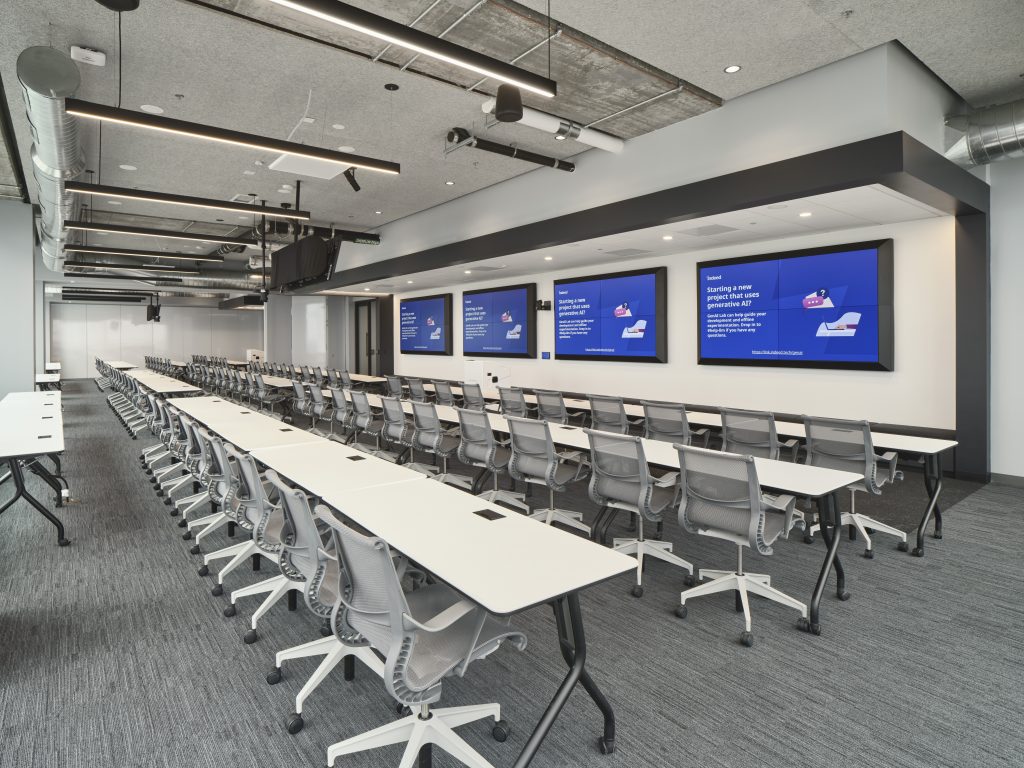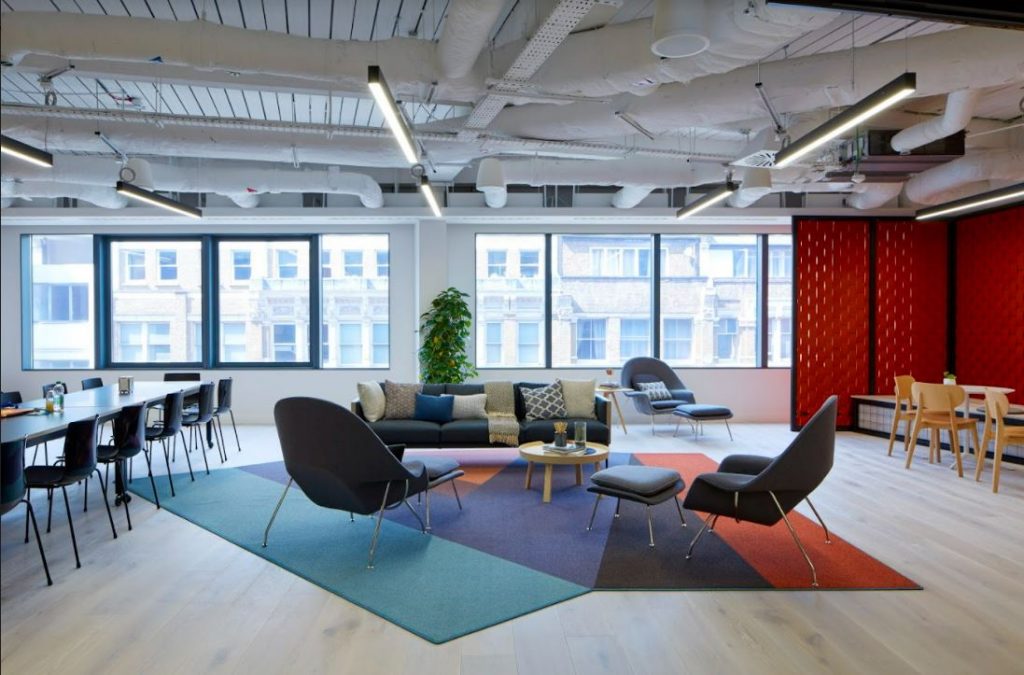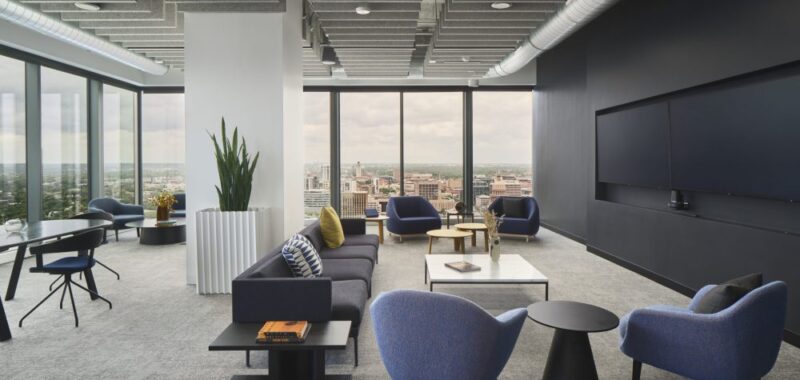See how Indeed is turning office closures into zero-waste wins—saving money, supporting communities, and setting a new standard for circular workplace design.
We’ve seen it. An office building goes dark, a familiar sight as companies relocate or resize. Soon after, the inevitable dumpsters arrive, quickly filling—often overflowing—with desks, chairs, and cabinets. Much of this discarded furniture is perfectly usable, sometimes barely used, yet its fate is destined for the landfill. This all-too-common scene became the standard approach for workplace decommissioning over many years, a routine process unfortunately synonymous with significant waste and squandered resources, representing countless missed opportunities to reclaim value.
Historically, however, this “take-make-dispose” approach hasn’t always been the norm. Resourcefulness and reuse have deep historical roots. The World Economic Forum points to examples like 3,000-year-old tools repurposed into ceramic vessels. Romans utilized waste materials from the eruption of Mount Vesuvius, creating what Professor Allison Emerson describes as “staging grounds for cycles of use and reuse.” In essence, keeping resources in continuous use – the core idea of a circular economy – was the dominant model long before industrialization ushered in our current linear system in the late 19th and 20th centuries.
Now, there’s a reemergence towards these circular principles. The goal is to mitigate waste significantly.
Processes like clearing out an office are transforming from simple disposal into acts that create a positive impact, benefiting the planet, people, and the bottom line.
This shift is becoming an essential practice in workplace design and management. Indeed is proving how this approach can turn the complex task of closing offices into compelling sustainability wins, save significantly on disposal and future buildout costs, and directly help the lives of others. Let’s explore how they’re making it happen.
Amplifying Impact
Recognizing that widespread change requires collaboration and strategic partnerships is essential. Over the last 5 years, Indeed has partnered with others sharing a dedication to sustainability, including Kimiko Green and Green Standards.
Kimiko Green fosters a community focused on sustainable furniture planning and procurement, offering resources like their Playbook to guide the industry towards greener, more circular practices. Green Standards specializes in responsible workplace decommissioning, helping organizations manage furniture and equipment diversion from landfills through strategic donation, resale, and recycling channels.
These types of partnerships are crucial for driving broader industry change. This collaboration allows Indeed to:
- Share valuable knowledge and best practices, fostering innovation.
- Increase transparency through tools like Sustainability Impact Dashboards, enabling data-driven decisions.
- Advocate for change by demonstrating successful circular models that inspire others.
Pathways for Decommissioned Furniture
Once furniture is decommissioned, circular strategies focus on finding its next best use rather than defaulting to disposal. Three primary pathways stand out for giving items a second life: internal reuse, gifting programs for employees, and donation to community organizations. Each offers distinct benefits while contributing to the overarching goal of landfill diversion.

Reuse represents the highest value retention in the circular hierarchy. This involves identifying needs elsewhere within the organization and redeploying surplus furniture to new or refurbished company spaces. This approach significantly reduces the need to purchase new items, leading to substantial cost savings and conserving the resources embedded in the existing furniture.
Gifting programs offer another impactful route focusing on employees. This approach provides employees access to high-quality furniture and supports the creation of comfortable and effective home workspaces, which is crucial in today’s hybrid work landscape. Functional, ergonomic items like chairs and desks contribute directly to employee productivity and physical well-being, addressing needs that might otherwise be financially challenging for individuals. An employee previously managing with a makeshift setup can acquire proper furniture through such a program, directly improving their health, reducing strain, and enhancing their overall work experience.
Donation extends the furniture’s useful life by directing it outside the organization to community partners. Collaborating with non-profits, schools, and charities ensures that usable desks, chairs, and storage find new homes where they are genuinely needed. This pathway not only prevents waste but also delivers significant social value by supporting community organizations and those they serve.
Together, these strategies form a powerful toolkit for transforming furniture decommissioning from a waste problem into an opportunity for the triple bottom line: profit, people, and planet.
Global Impact
The impact of these circular strategies becomes clear when looking at specific decommissioning projects undertaken by Indeed. For example, combined efforts across various projects have led to diverting 147 tons of material from landfills and providing in-kind donations to 26 community organizations. Underlying these successes is a clear hierarchy of priorities: While the first goal is always to reuse, Indeed also utilizes resale, donation, and employee gifting programs (in select locations) to find the next best use. Only if all other strategies fail is recycling pursued.

The following are highlights from just a few Indeed office locations demonstrating this process in action:
Germany: A furniture gifting program implemented in Germany achieved remarkable success. An impressive 84% of decommissioned furniture found new homes; 21% was directly gifted to employees, and 63% was donated to various community organizations. Consequently, only 16% of the items required recycling, resulting in a complete diversion of furniture from landfills. The donation of furniture to local non-profits and community organizations provided a crucial secondary avenue, ensuring that valuable resources continued to serve a purpose rather than being discarded. This, combined with the responsible recycling of non-reusable materials, led to the outstanding achievement of sending zero waste to landfills from this project.
London: The decommissioning of a single floor in London demonstrated a different yet equally effective blend of circular strategies. A significant portion, 28%, of the furniture was gifted directly to employees, while another 6% was donated to local community organizations. The remaining 66% of the items were managed through responsible recycling. This combined approach successfully mirrored the outcome in Germany, ensuring that no furniture from this project reached the landfill.
Singapore: The decommissioning efforts in Singapore showcased a strong emphasis on community support, with a substantial 63% of the furniture being directed to community partners. Employee gifting served as the next priority, accounting for 21% of the items. The final 16% was addressed through responsible recycling. This prioritization of reuse, gifting, and recycling resulted in a 100% landfill diversion rate for the project.
Austin: At Indeed Tower in Austin, circularity took center stage even before decommissioning. When setting up this new major office hub, reuse of furniture from previously closed offices was prioritized. An impressive 70% of the furniture in the new space was reused. This included 100% of workstations, gym equipment, and task seating, along with 90% of conference room tables. This proactive approach shows a strong commitment to embedding circular principles right into new workspace design, minimizing resource consumption from the start.
Applying Circular Principles
The application of circular principles in decommissioning aligns directly with urgent global sustainability goals. The traditional linear “take-make-waste” economic model is unsustainable, particularly in industries like furniture manufacturing and consumption. Sustainability playbooks, such as Indeed’s Sustainability Program Playbook, outline goals like achieving net-zero emissions by 2030.

Moving beyond linear models in workplace design requires intentional steps, particularly at the end of a space’s lifecycle. For designers and decision-makers looking to embed circularity into decommissioning, here are five key actions:
- Prioritize Reuse: Actively look for ways to incorporate existing furniture into new or refurbished spaces.
- Implement Gifting/Donation Programs: Establish clear channels for giving unwanted, usable furniture a second life with employees or community groups.
- Partner with Sustainable Vendors: Select decommissioning partners and suppliers who prioritize responsible practices and offer circular solutions.
- Track and Measure Impact: Utilize available tools to monitor and report the environmental and social outcomes of decommissioning activities.
- Embrace Collaboration: Engage with industry peers and organizations to share learnings and collectively drive systemic change.
These strategies deliver tangible environmental, social, and economic wins. By proactively incorporating these circular principles, the workplace can significantly reduce its environmental footprint and contribute to a more resourceful and equitable future.
Images courtesy of Indeed.

